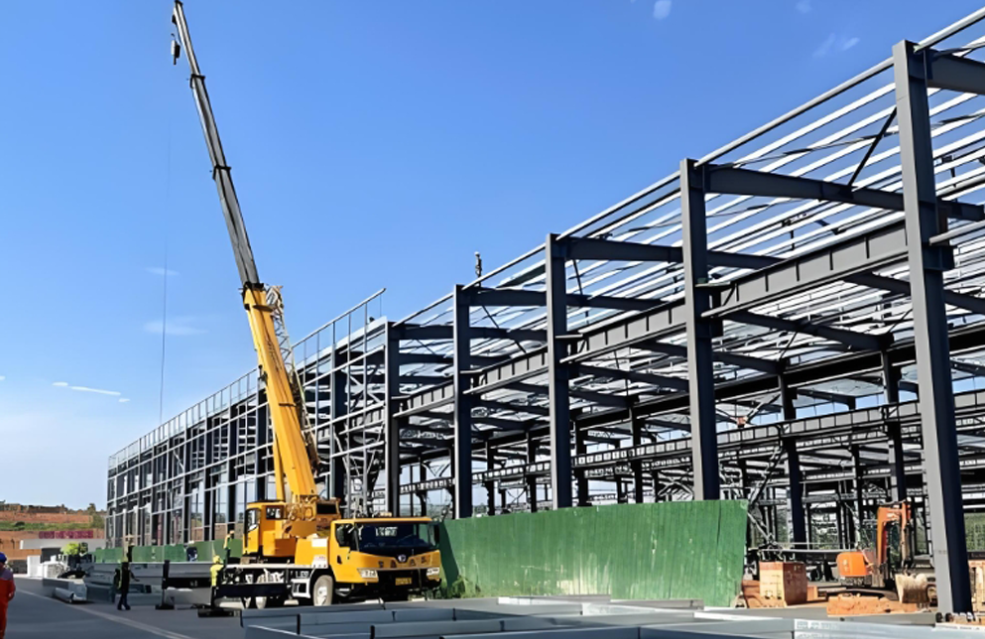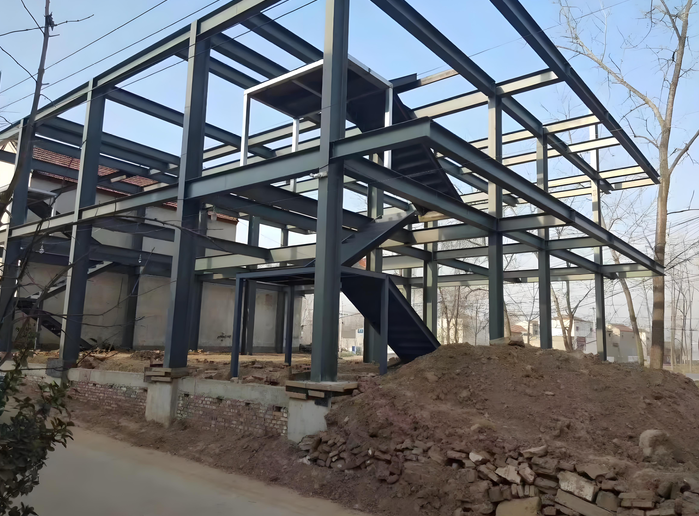Steel Structure Welding Workshop/Warehouse Building

(I) Material Quality Requirements
(1) Welding rods, welding wires, fluxes, electroslag welding nozzles, studs, welding ceramic rings, and shielding gases used in the construction of the Xinguangzheng steel structure welding workshop/warehouse must have valid factory quality certificates, inspection reports, and other quality documentation.
(2) For the Xinguangzheng steel structure welding workshop/warehouse building, welding consumables (rods, wires, fluxes, etc.) are generally selected based on the principle of matching the strength of the weld metal to that of the base metal.
(3) Prior to use, welding rods, fluxes, flux-cored wires, electroslag welding nozzles, and ceramic rings for stud welding must be baked strictly according to the product instructions and relevant welding procedure specifications.
(II) Construction Process Quality Control
(1) When the ambient temperature during welding operations is below 0°C but not lower than -10°C, the weld joint and the surrounding surface area (in all directions, extending at least 2 times the plate thickness and no less than 100mm) must be preheated to a temperature not lower than 20°C and the specified minimum preheat temperature before welding commences. This temperature must be maintained throughout the welding process.
(2) Preheating and interpass temperature control should be achieved using methods such as electric heating, flame heating, or infrared heating, measured with dedicated temperature instruments. The heating zone for preheating should extend to both sides of the weld groove, with a width at least 1.5 times the thickness of the member at the welding point and no less than 100mm. Temperature measurement points should be located:
* On the opposite side of the heated surface (backside), at least 75mm away from the weld groove edge on each side, for non-enclosed space members.
* On the front side, at least 100mm away from the weld groove edge on each side, for enclosed space members.
If the preheat temperature selected by the procedure is lower than the minimum required by the code, it must be determined through procedure qualification testing.
(3) Striking an arc on the base metal outside the designated weld area is strictly prohibited. Areas where the arc is struck within the groove must be fully fused into the weld and no arc craters shall remain. Steel used for run-on tabs, run-off tabs, and backing plates shall have a specified yield strength not exceeding that of the base metal being welded and possess comparable weldability.

(4) Multi-pass welds shall be deposited continuously. Each weld pass must be cleaned promptly after completion.
(5) If design documents or contract documents require post-weld stress relief (PWSTR), methods such as local annealing using electric heaters or furnace annealing should be used for stress relief treatment of butt joints subjected to tensile stress in fatigue calculations, or components/nodes with densely concentrated welds. If the purpose is solely to stabilize structural dimensions, vibration stress relief may be used.
(6) When using peening to relieve stress in intermediate weld layers, a round-nose hand peening hammer or small vibrating tool shall be used. Peening shall not be performed on the root pass, the final cap pass, or the base metal at the edges of the weld groove.
(7) Non-destructive testing (NDT) of welds in carbon structural steel shall be performed after the weld has cooled to ambient temperature. For low-alloy steel, NDT shall be performed no less than 24 hours after welding completion.
(8) Stud welds shall undergo bend testing on a sampling basis. After bending the stud 30 degrees, the weld and heat-affected zone (HAZ) shall exhibit no visible cracks.
(9) Repair welding shall be performed continuously on the defective area. If welding is interrupted, post-heating and insulation measures must be taken to prevent crack formation. The number of repair attempts at the same weld location shall generally not exceed two. After repair, the welded joint area shall undergo additional magnetic particle or liquid penetrant inspection.



